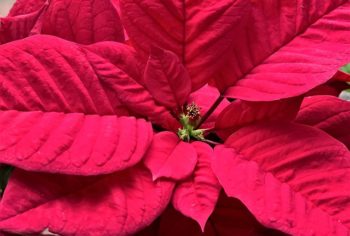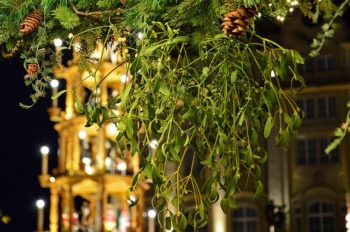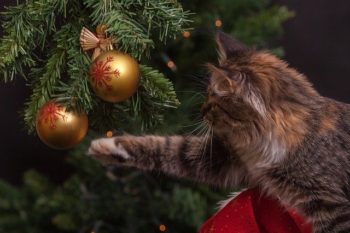 BEAUTIFUL PLANTS AND HEALTHY PETS
BEAUTIFUL PLANTS AND HEALTHY PETS
Hello Everyone and Welcome back to another FACTUAL FRIDAY. It’s that time of year again. December. A holiday month filled with Fun, Food and Festivities. But, in the midst of all our merry-making, let’s not overlook our four-legged friends — their needs and their safety.
Our pets are such important parts of our lives. Studies have shown their presence creates balance, harmony and peace of mind. They help decrease depression, lower blood pressure and boost our immune systems. Pets are our allies when fighting disease and illness showering us with unconditional love. I know. I’ve had two wonderful Labrador Retrievers — Lady helped me through my first cancer — and Angel helped me through my second and third.
So, let’s make sure we keep them safe and healthy this Holiday Season, especially when it comes to our traditional holiday plants. Yes, these can be beautiful and they make our homes look so inviting. But there are several that do not mix with our beloved pets.
POINSETTIAS
They are, perhaps, the most common and recognizable of the holiday plants – poinsettias. Found in white, pink and flaming red colors, this plant is not exactly poisonous to pets — but the leaves contain a sap that is irritating to the tissues of the mouth and esophagus. The sap also can cause vomiting and nausea. If a large amount of poinsettia leaves were to be ingested, poisoning might result. But this is highly unlikely as the sap has an unpleasant taste and an irritating quality to it, and most pets will leave it alone.
HOLLY
Found everywhere this time of year, both the leaves and berries of the holly plant contain chemicals such as ilicin, saponins and methylxanthines. Toxic to both cats and dogs, these chemicals can cause diarrhea, vomiting and even depression.
MISTLETOE
This is another holiday favorite that everyone loves to use in decorating. Mistletoe, however, contains multiple substances, including toxalbumin and pharatoxin viscumin that also are toxic to cats and dogs. If ingested by your pet, mistletoe can cause severe intestinal upset, a severe drop in blood pressure and respiratory problems. So, if you do have this plant in the house, make sure you hang it high where it can be safely used for its intended purpose.
LILIES and AMARYLLIS
Holiday flowers are hard to beat for beauty. But, looks can be deceiving. Unfortunately, both amaryllis and lilies are highly toxic to pets. Lilies in particular can have a severe impact on a cat’s intestinal tract. And amaryllis, which contains lycorine can cause vomiting, diarrhea and abdominal pain in cats and dogs.
PINE NEEDLES
Finally, the simple pine needle. The oils found in fir trees and in the needles, can produce oral irritation, vomiting, diarrhea and lethargy. It’s important, therefore, to clean around your wreaths, garlands and Christmas trees to make sure there are no needles on the floor.
 And while we’re on the subject of CHRISTMAS TREES, which for many of us are one of the most common traditions of the holiday season, here are a few tips to keep yours pet-friendly as well as beautiful.
And while we’re on the subject of CHRISTMAS TREES, which for many of us are one of the most common traditions of the holiday season, here are a few tips to keep yours pet-friendly as well as beautiful.
- Place tinsel and shiny, glass ornaments high up on the tree away from curious felines and canines. Out of sight is out of mind
- Ornaments on the bottom third of your tree should be sturdy and shatterproof.
- Nothing tempts an inquisitive pet more than dangling or loose wires. So, place all electrical cords and lights deep within the tree. Use tape to secure cords on the floor. And, use a grounded three-prong extension cord for added protection.
- Pets often drink the water used for keeping your tree fresh. So, make sure the water is replaced regularly and don’t use any additives in it that could harm your pet.
- Place aluminum foil or a spiky rubber office mat under the tree. Pet’s don’t like to walk on things that “crackle” or on surfaces that are uncomfortable to sensitive paws.
- Why not try a scented pet repellent? Pets don’t like the smell of clove or citrus. Even a little bitter apple will do the trick. Just spray your tree before decorating, and avoid spraying anything on the lights.
In addition to these tips, always have lots of chew toys and pet treats on hand. Provide your pet plenty of exercise to dispel that extra energy. And, give them with a quiet “time out” place of their own where they can rest and calm down when needed.
In this way, every Fluffy and Fido can enjoy the holiday festivities with the whole family — in a safe and healthy environment!
Thanks for joining me everyone. I wish you all the Happiest of Holidays with loved ones near and dear. And until next time, stay in GOOD HEALTH and . . .
TAKE THE COURSE AND TAKE CHARGE!




Leave a Comment